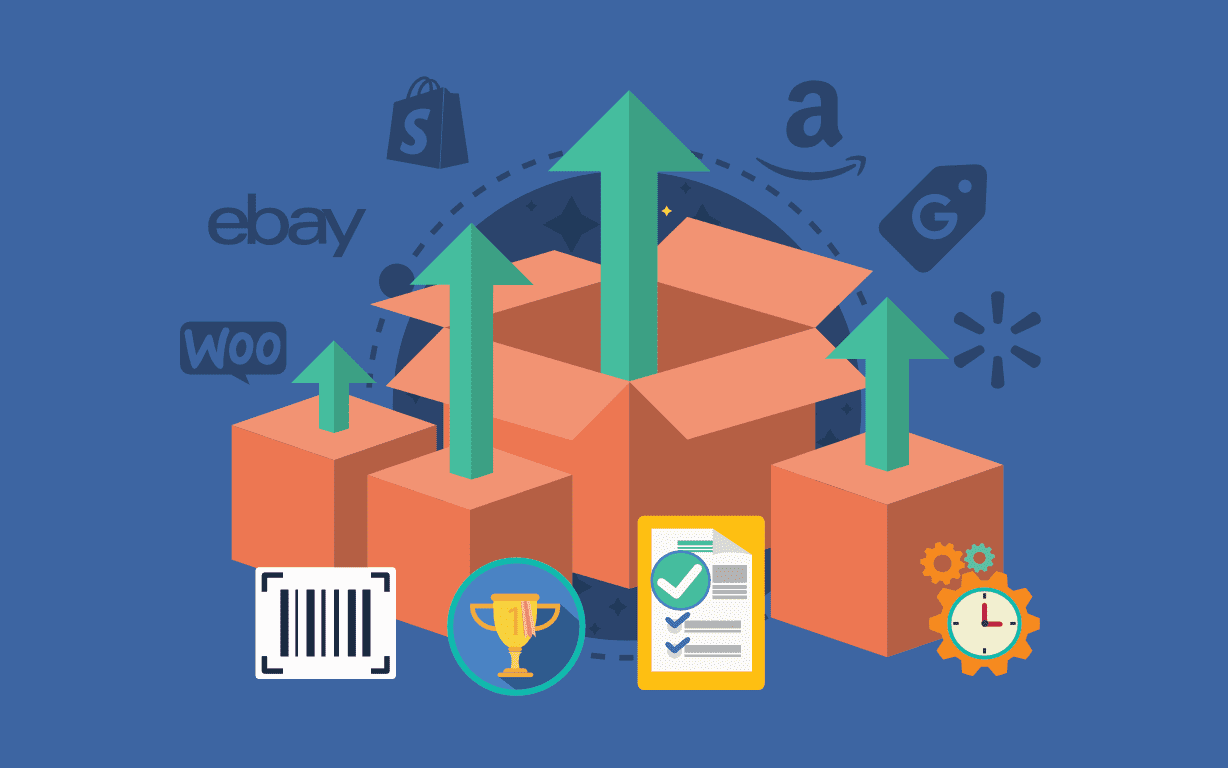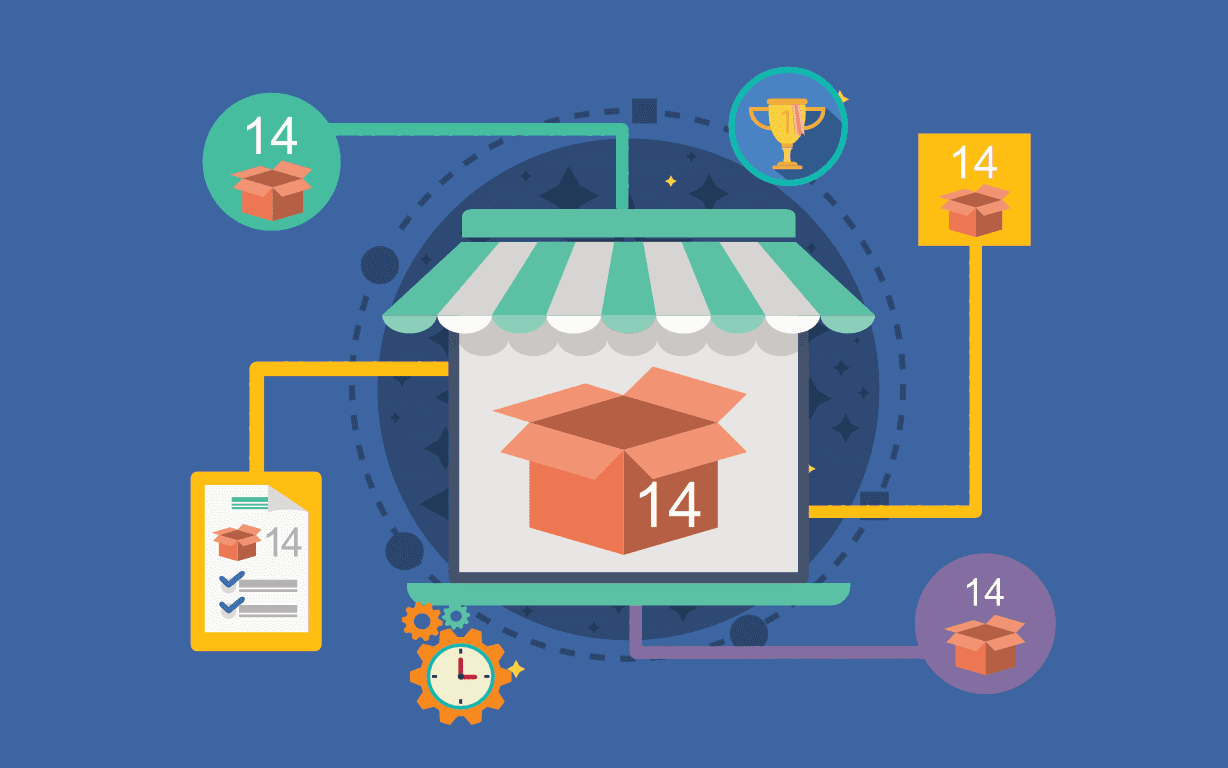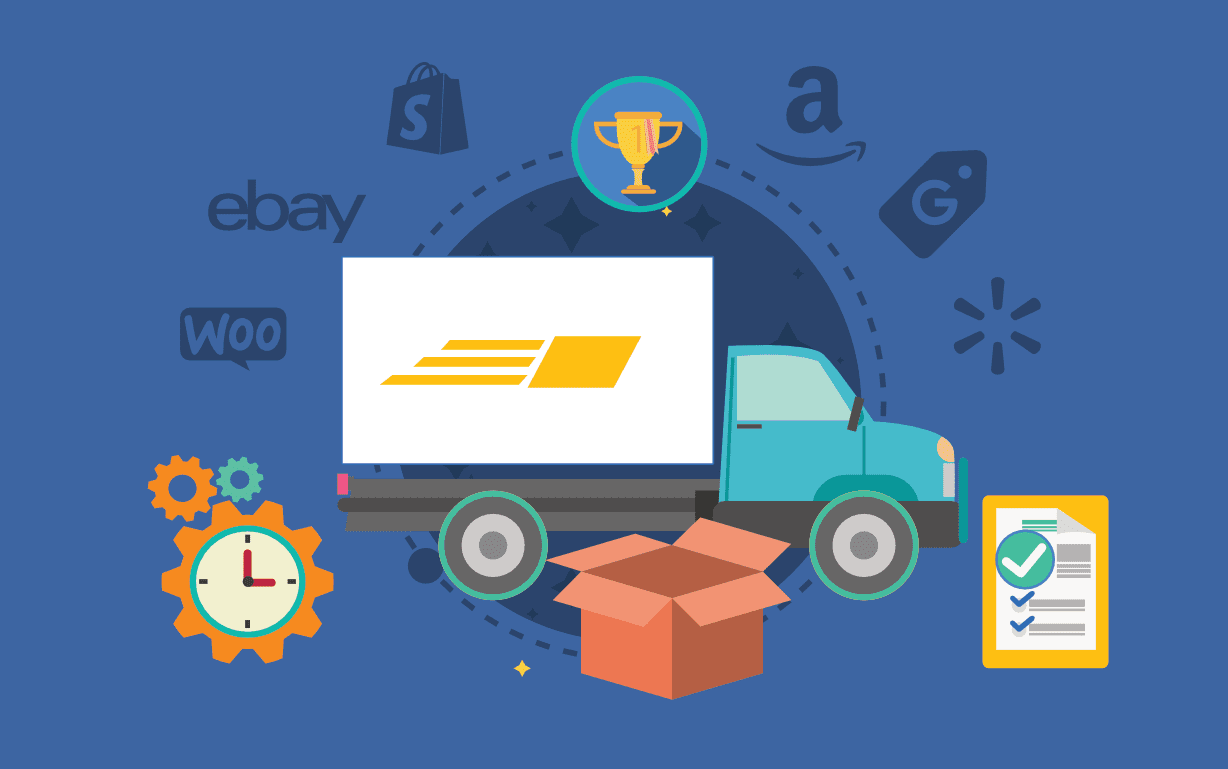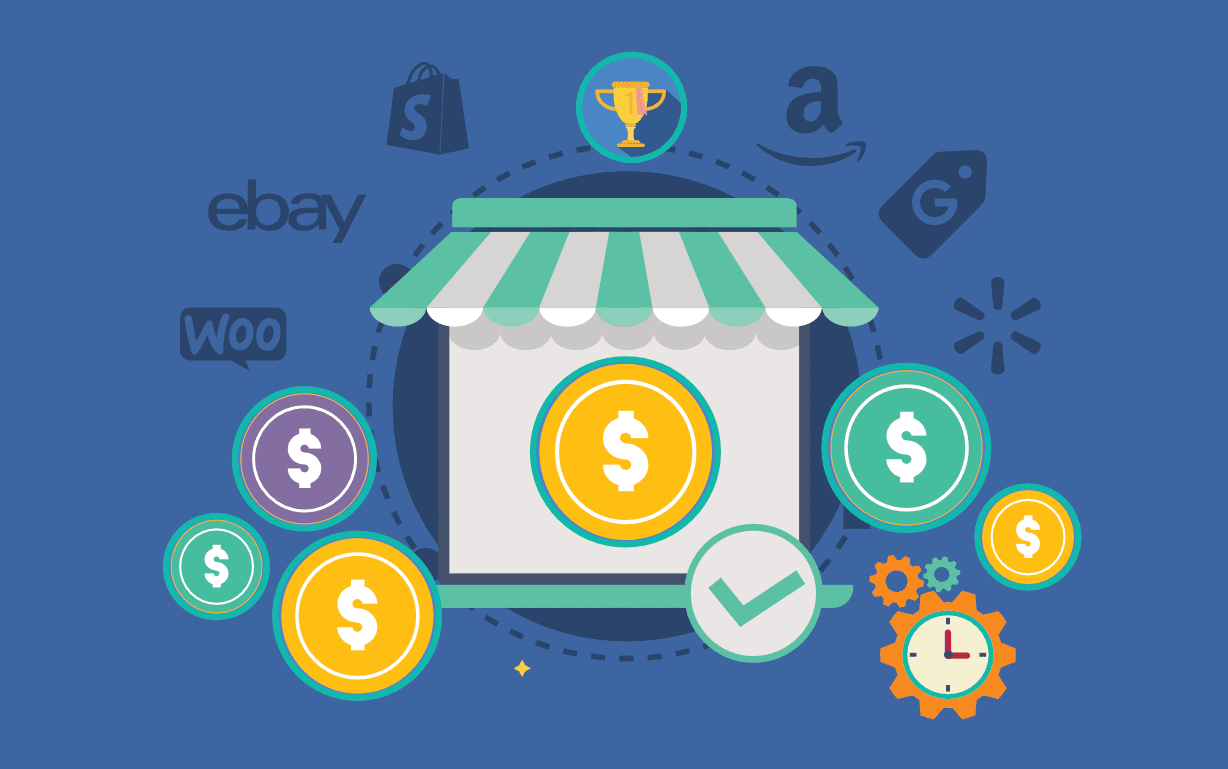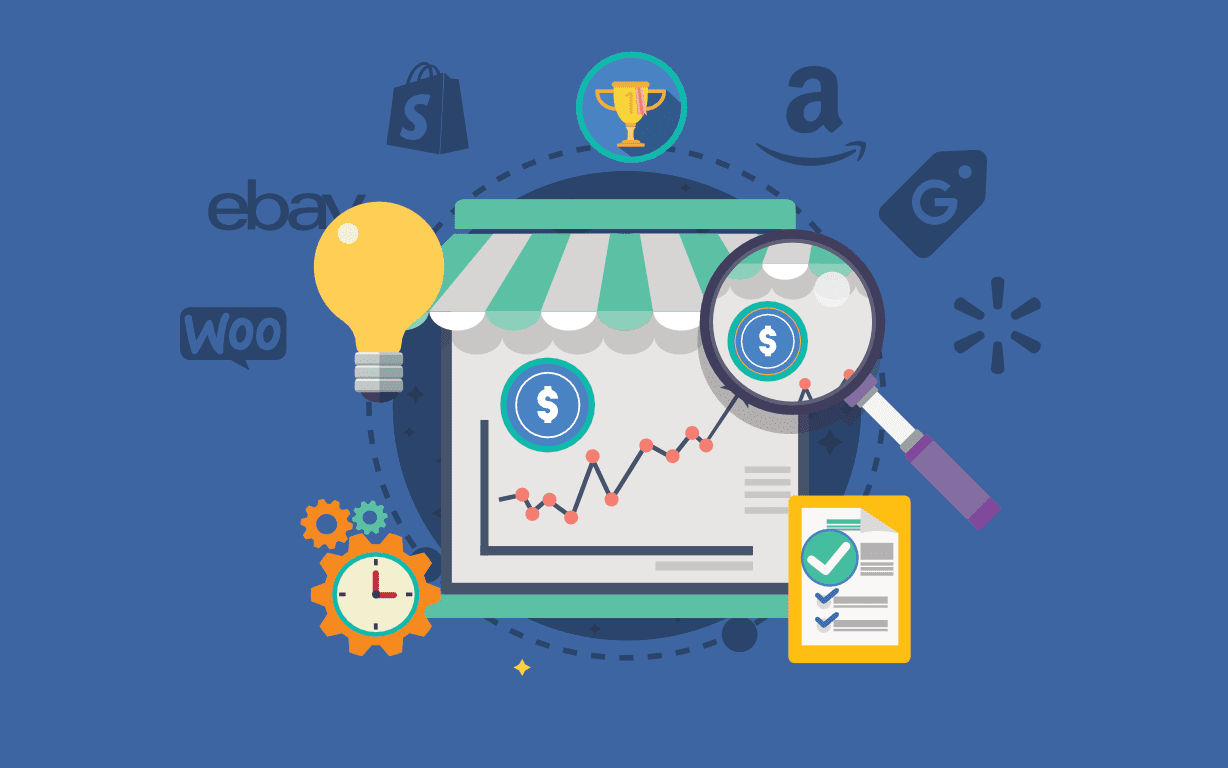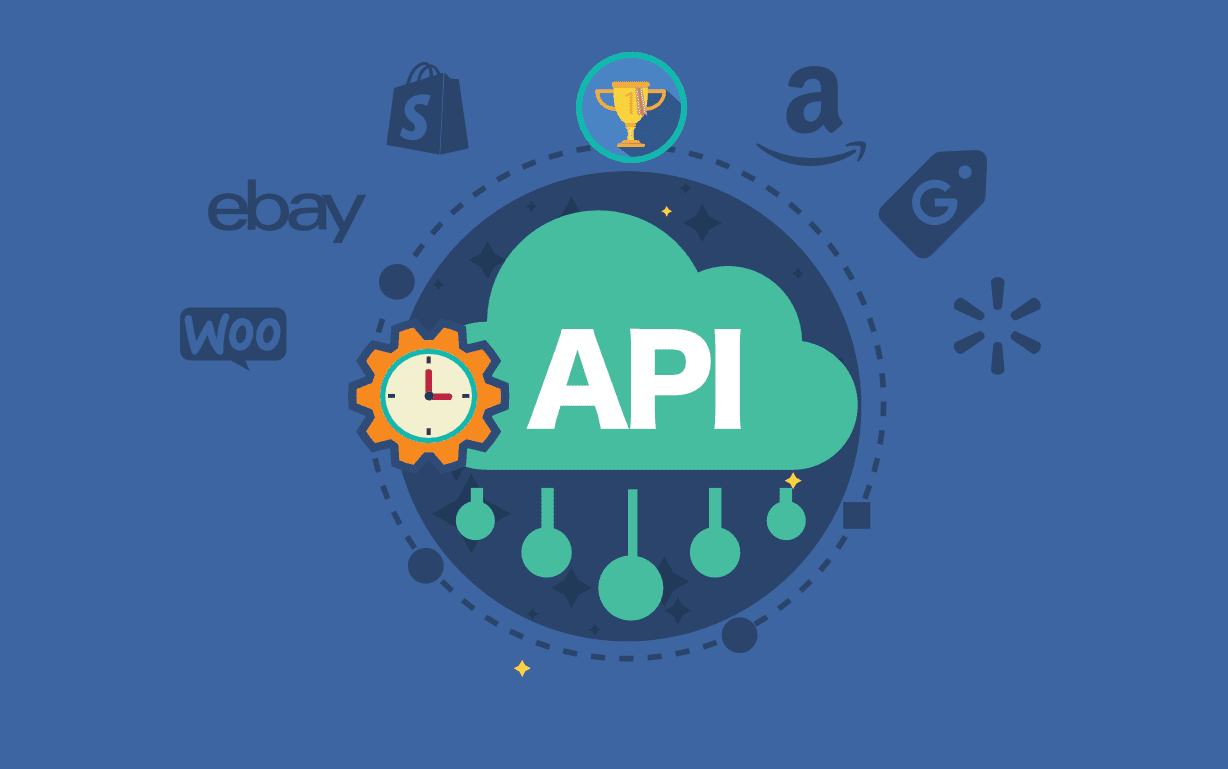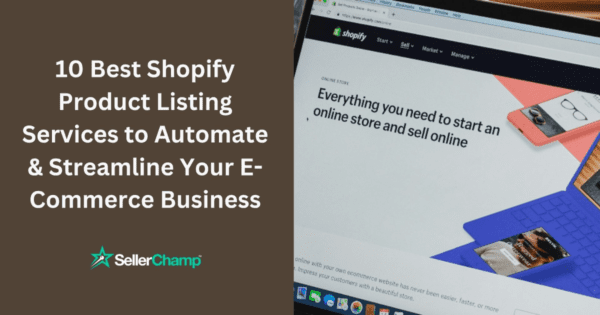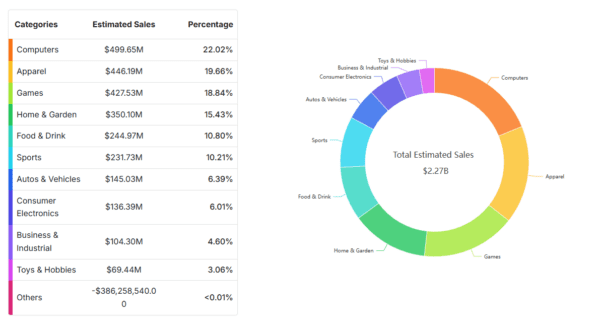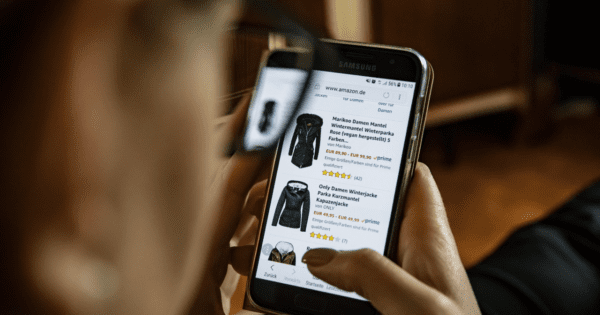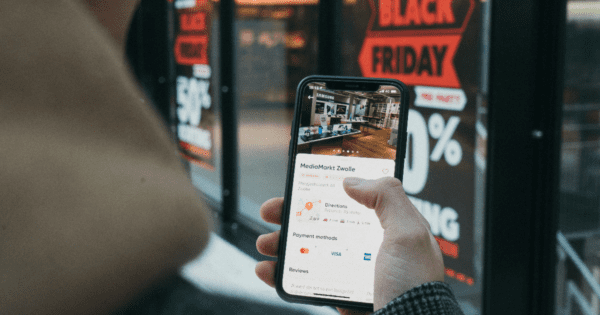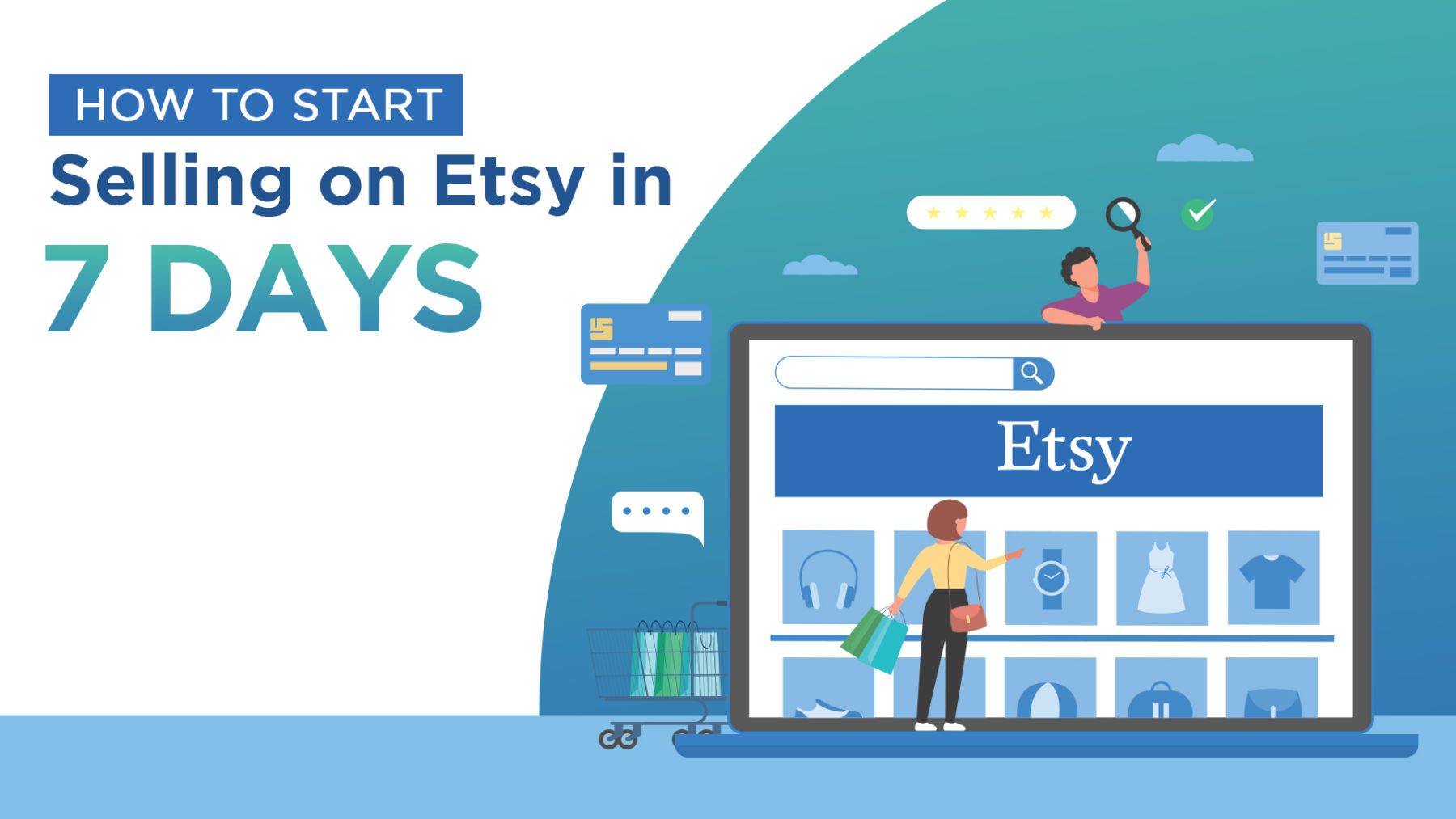
How to Start Sell on Etsy in 7 Days
Alicia Shaffer, the owner of Three Bird Nest, is among the richest sellers on Etsy. She earned over a million dollars in 2015 and rose to massive popularity through her Etsy store.
The secret behind Shaffer’s success? Beautiful product photography and a focus on showing how you can use the products.
But Shaffer’s isn’t the only success story on Etsy.
Etsy is the home of artists selling handmade products. As the sixth-largest eCommerce platform, Etsy gives artists across the world an avenue to monetize their skills. Whether you’re looking to start small or get into it full-time, joining over 4 million Etsy sellers is a great start to take your eCommerce business to the next level!
This quick guide will walk you through a seven-step plan to launch your Etsy store.
All you Need to Know About Selling on Etsy
This quick guide will walk you through a seven-step plan to launch your Etsy store.
1. Prepare the groundwork by learning all the basics
Before you jump into the details of opening your store, learn all the basics of selling on Etsy. Perform extensive research and read up on useful resources to finalize your product(s) and create your brand.
Here is a helpful list to guide you through this step.
Decide what to sell
Etsy boasts of over 60 million products listed across thousands of categories. So, your choice of products to sell on Etsy will take some creative brainstorming.
Multiple factors come into play in your choice of what you’ll sell. Here’s a quick checklist to finalize the products you wish to sell:
- Is it very time-consuming and difficult to make?
- Will people be interested in buying this?
- Are the raw materials easily available?
- Is there a lot of competition for the product?
Establish your brand
The only way to stand out from the competition is through unique and attractive branding. Your brand will be the backbone of your Etsy store, and it should define your store’s personality.
An appealing brand will drive more visitors to your online store and create excellent prospects. You can also use your brand to market your store on social media and build a strong following. Here’s Kiki & Nim’s store with over 19,000 sales to inspire you!
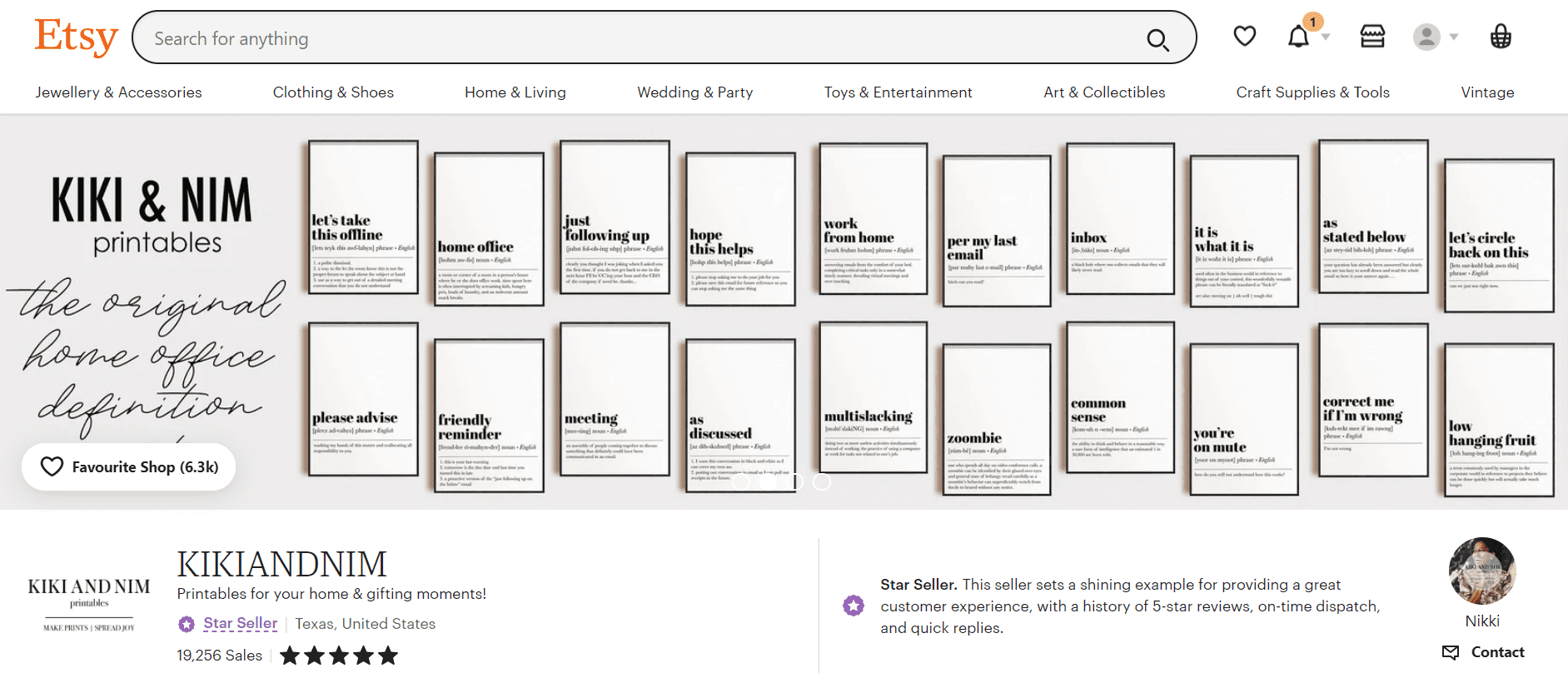
Use these steps to create the basic framework for your brand.
-
-
- Narrate your story: what you’re selling and why.
-
- Identify your target audience: speak to them through your branding.
-
- Define your USPs: what sets you apart from the competition.
-
- Create an attractive design: pick unique packaging and labels.
-
- Decide your brand voice: choose how you’ll communicate with your customers.
-
Join Etsy forums
The Etsy forum community works as a knowledge hub for new sellers—with updates on all the latest trends and unique ways to grow your business.
Besides learning more about the platform, you can also find opportunities to cross-promote your products. Find sellers with products that supplement yours and make a partnership.
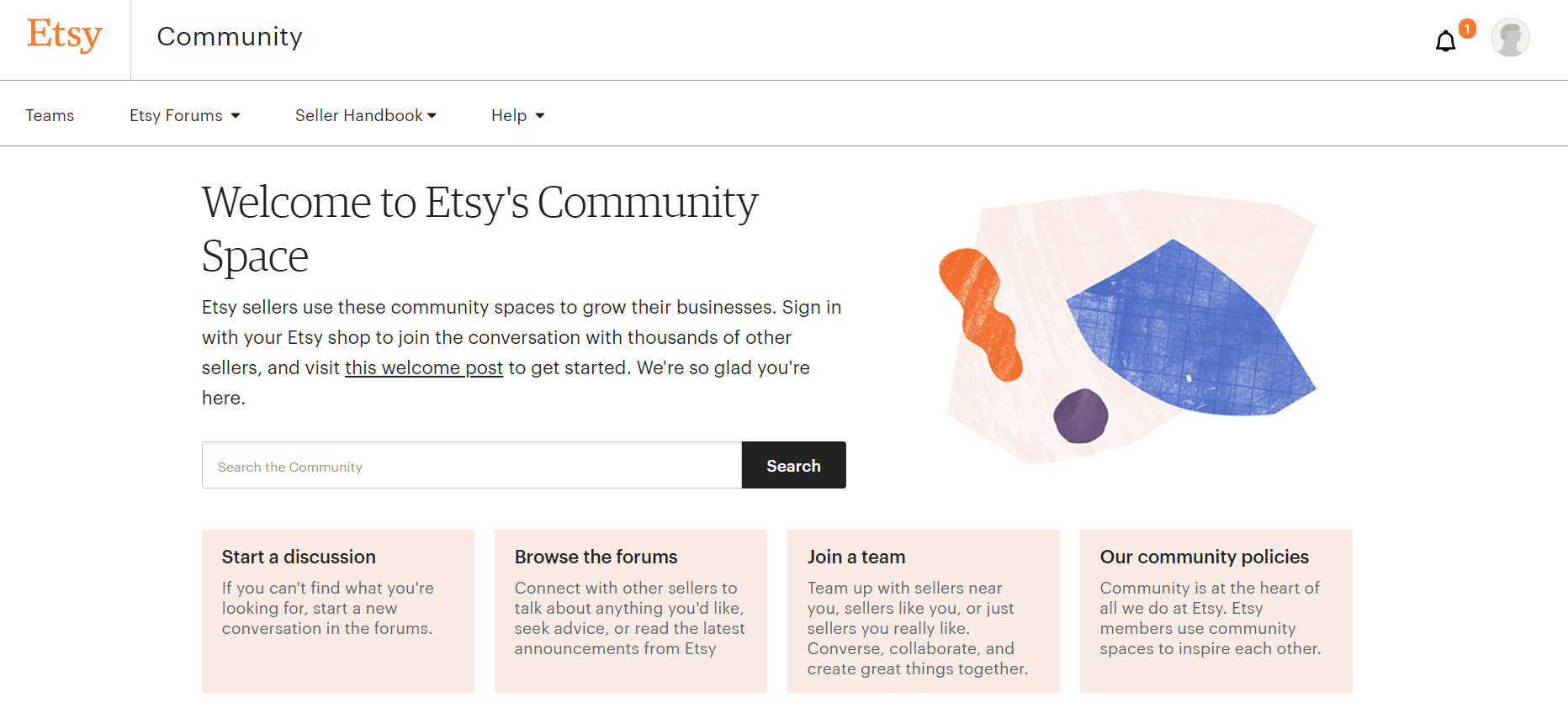
2. Evaluate relevant Etsy policies and strategize
Once you have learned some basics of Etsy, spend time understanding the platform’s policies. Research about their charges for sellers, rating system, and dispute resolution approach. Knowing these details will come in handy when you face any mishap after launching your store.
There are two main policies that you should know about to protect your interests as a seller.
Seller fees
Familiarizing yourself with all kinds of fees on Etsy will help you decide the best pricing for your products. Create the right budget for your store and pay all the fees timely and avoid restrictions on posting new listings or suspension of your store. Here’s a gist of all the fees you can expect to pay.
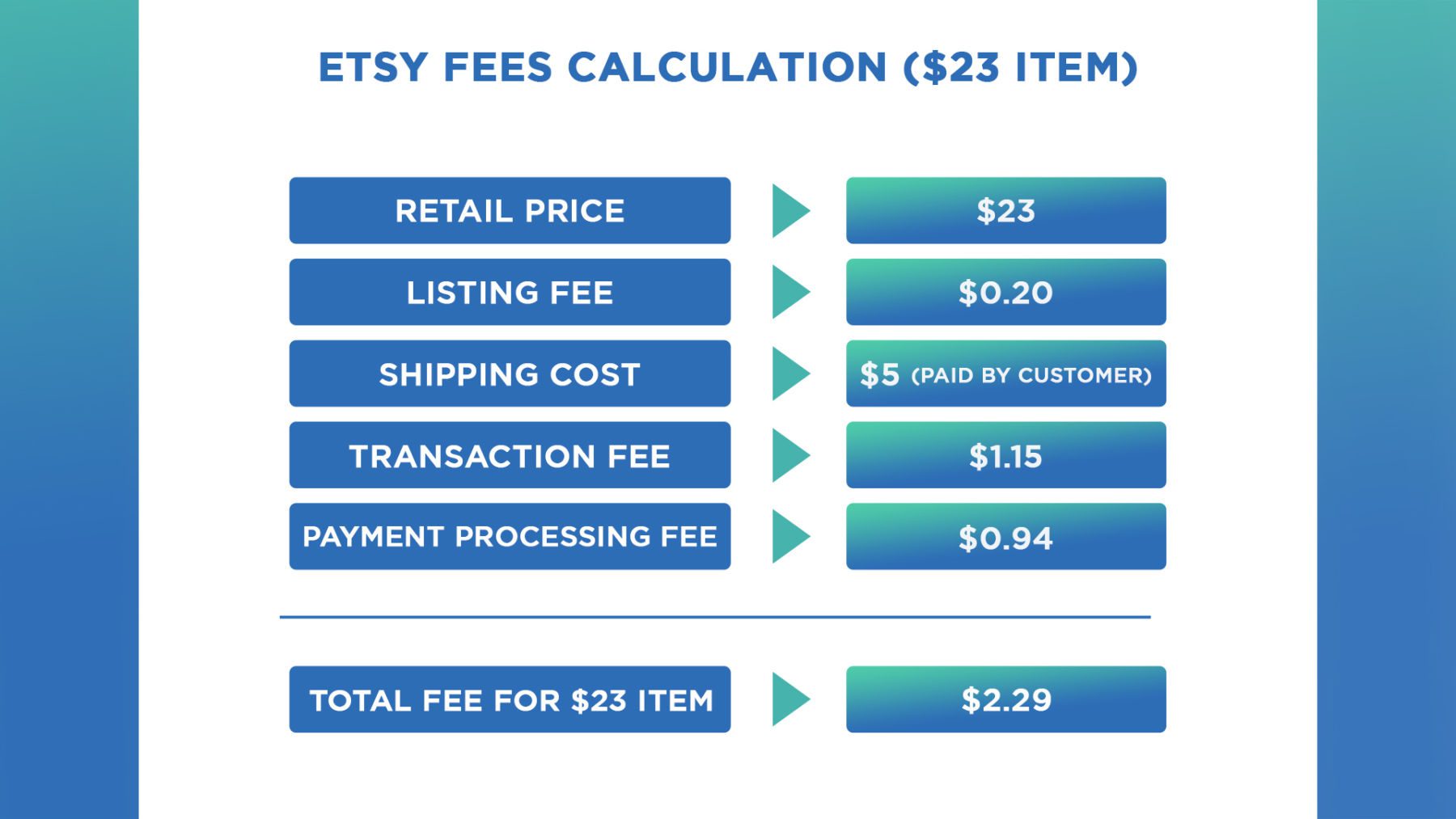
-
-
- Listing fee: A flat rate of 20 cents for every listing you post is charged, irrespective of whether the item sells or not.
-
- Multi-quantity fee: An additional 20 cents fee is charged for every second item you sell for the listed product.
-
- Transaction fee: A 5% fee is charged on the total value of the sold item in local currency.
-
- Shipping transaction fee: A 5% fee is charged on the shipping fee you charge from your buyers.
-
- Payment processing fee: A fixed rate plus a percentage of the item’s selling price.
-
Seller Protection Policy
When you’re running a store, it’s natural to have some conflicts with certain customers. Your customers might make false claims for a refund or misbehave for delayed shipping.
To protect its sellers, Etsy has a detailed and easy-to-apply seller protection policy. You simply need a good standing for your shop and use the platform’s basic features to be eligible for this policy.
Under this policy, sellers can request help from Etsy corporate. The team will then help the sellers with the mediation of disputes regarding any issue. In essence, this policy is an expression of Etsy’s commitment to its sellers and their interests.
3. Set up your Etsy store and finalize the backend
Now that you have everything to get started, it’s time to set up your Etsy store. Follow these easy steps to get started with your shop.
Step 1 – Go to etsy.com and scroll to the end to find the option for “Sell on Etsy.”

Step 2 – When you click on the button, it’ll prompt you to another button to ‘Open your Etsy store.’
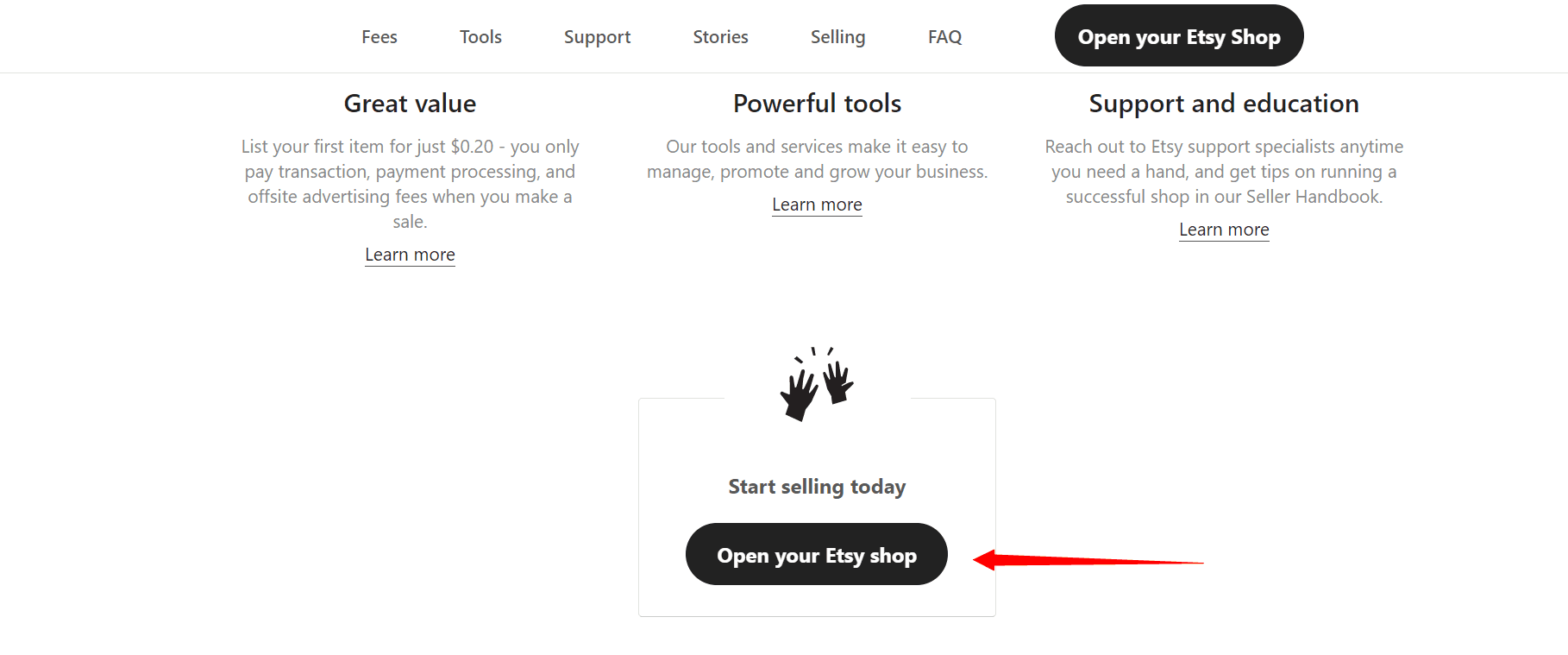
Step 3 – Here, sign in to your existing user account to go to the next step.
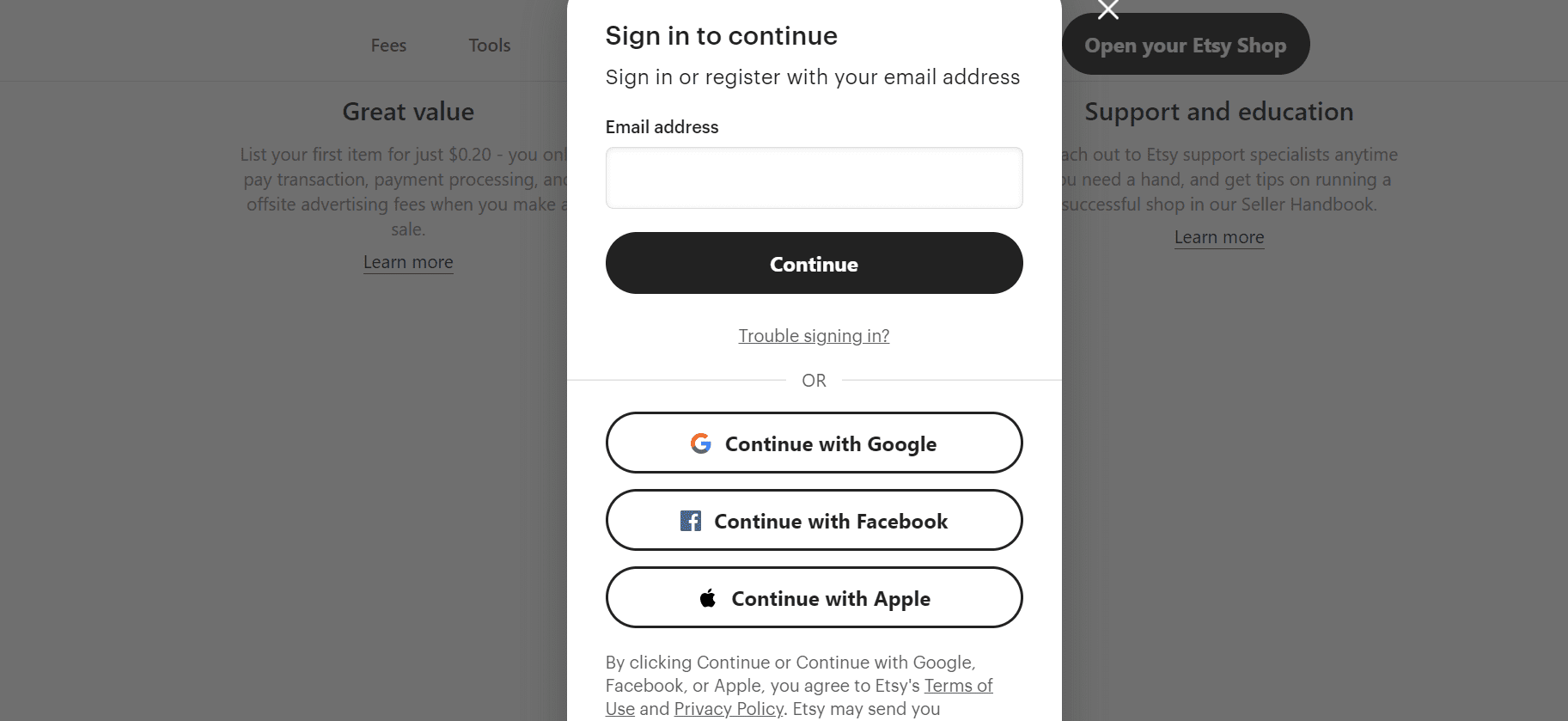
Step 4 – The first step will be to enter some preferences for your store—the language, the currency, and the country. You can also choose whether you’re a part-time or full-time seller to convey your time commitment.
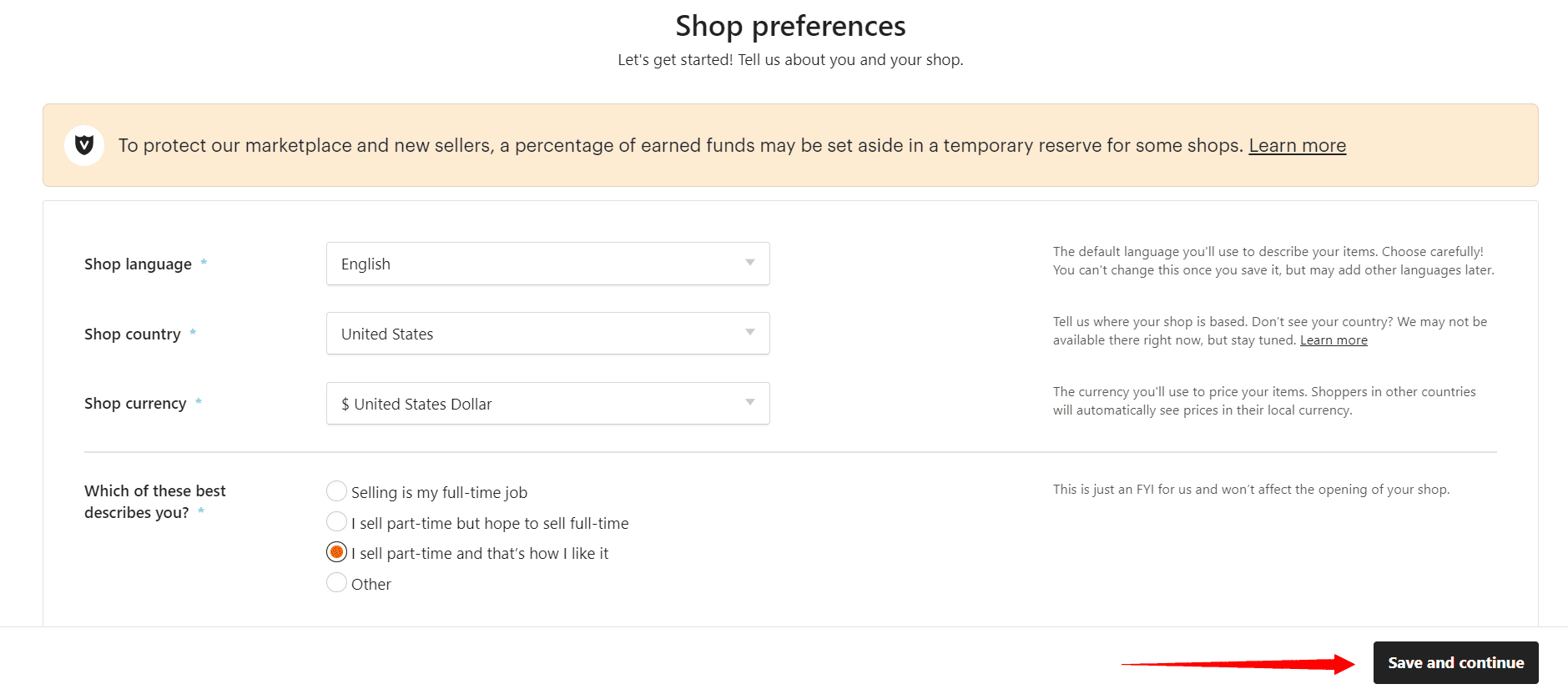
Step 5 – Decide your shop’s name and check for its availability in the next step.
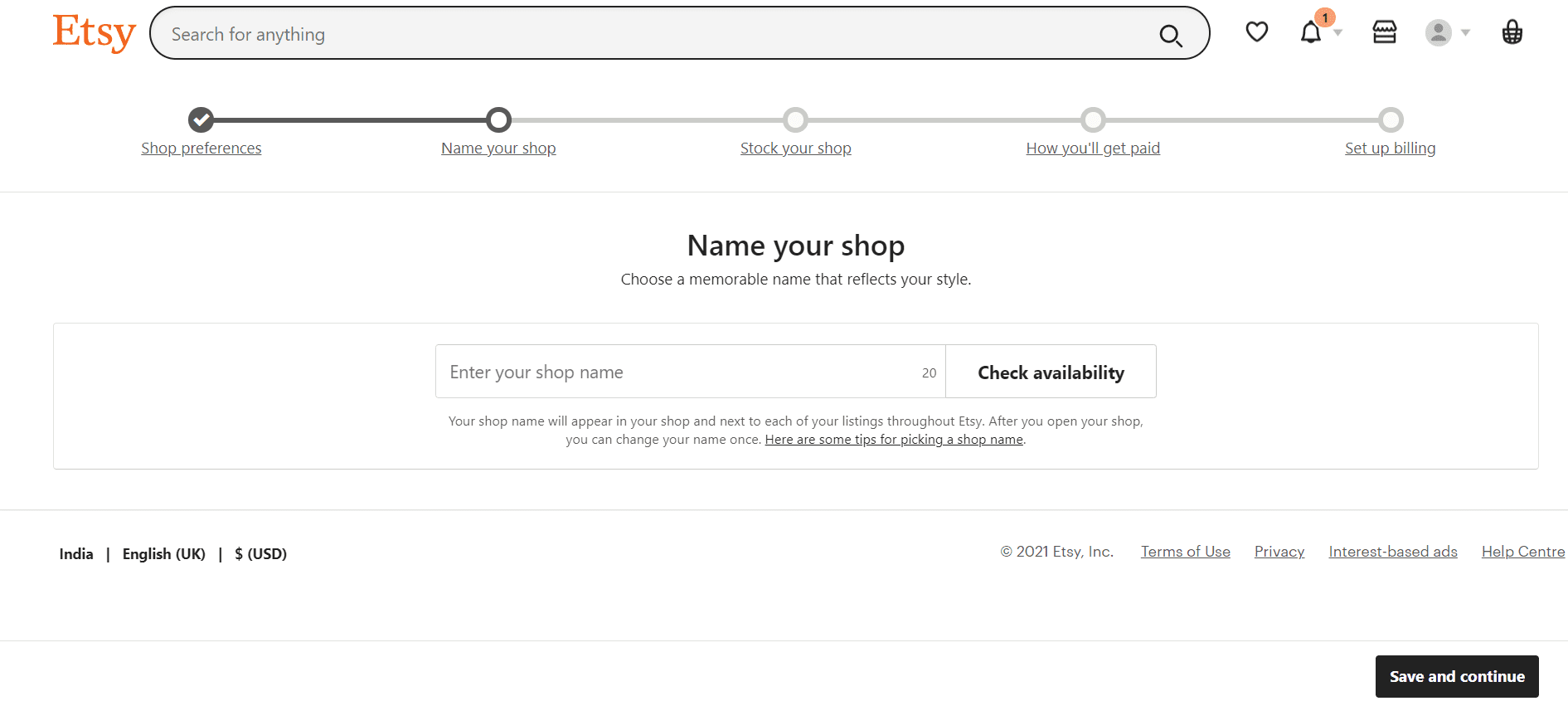
Here are a few points to remember while naming your shop:
a. It should be between 4-20 characters.
b. It should not have any spaces/special characters.
c. It should be original and not infringe on any trademarked names.
Step 6 – Now, you can start listing your products.
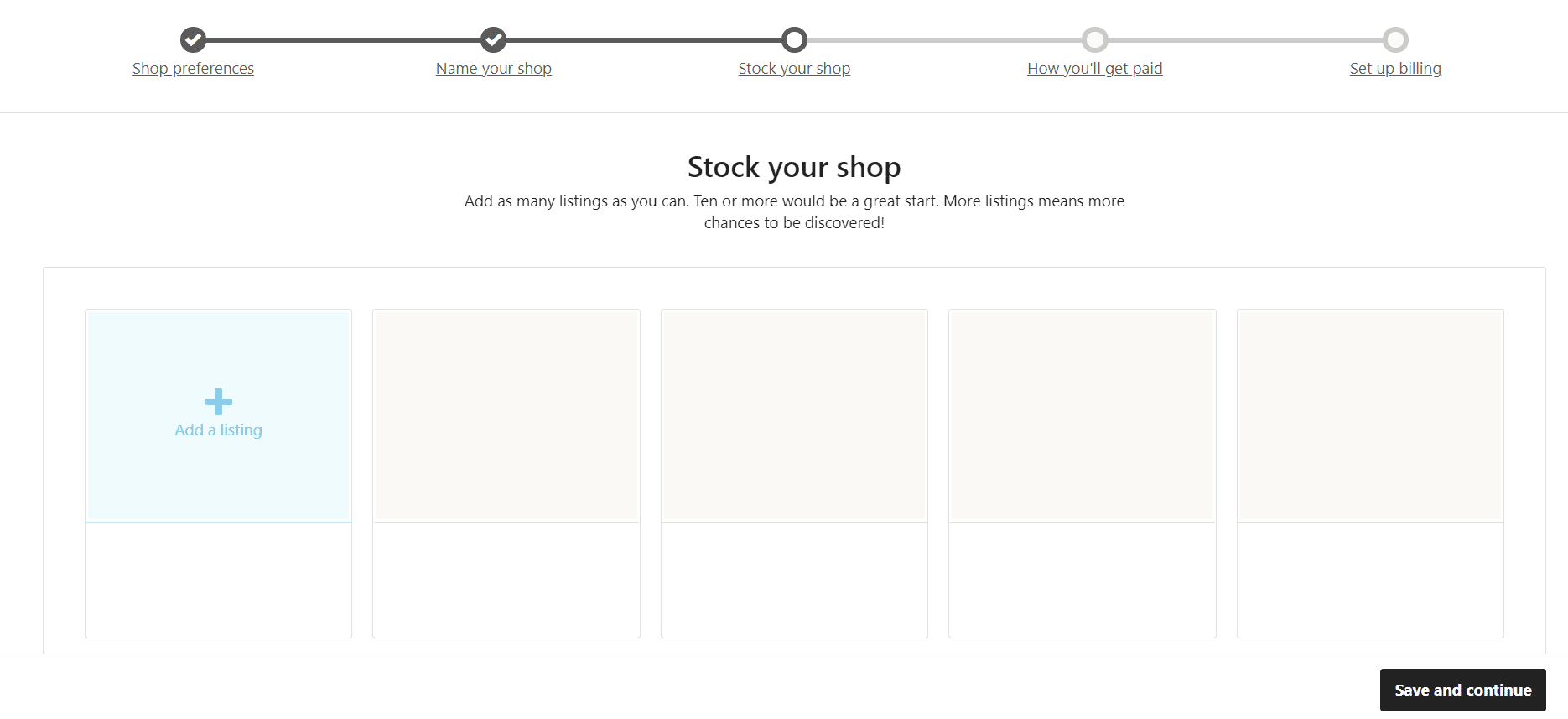
For every listing, you can put up to 9 photos in different styles.
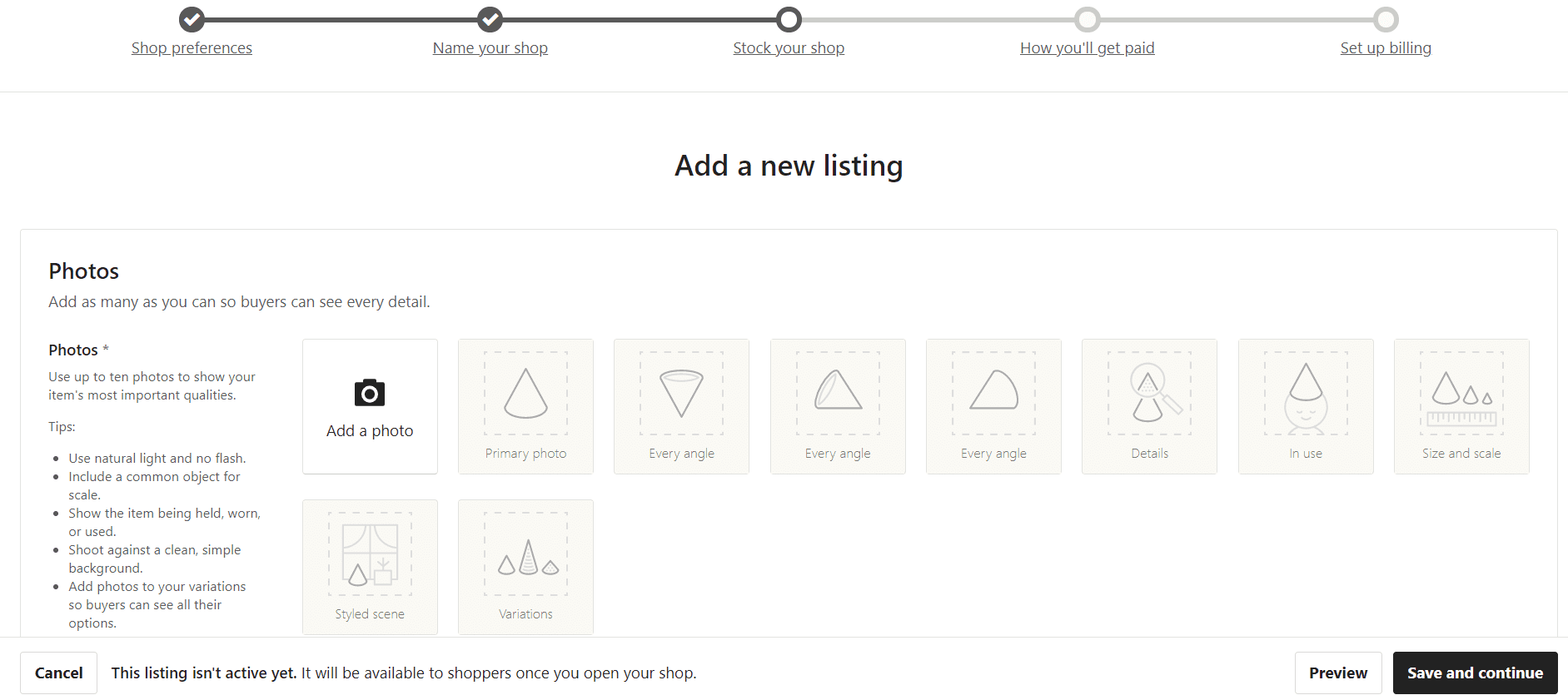
After you’ve stocked your shop, the only step is choosing your payment method. The Etsy Payments feature works in some selected countries. So, you can choose that or link your PayPal account.
4. Create a stellar product listing
When you’re done setting up the backend of your shop, focus on creating unique listings. An attractive listing will bring in more prospective buyers and significantly increase your sales.
There are four important elements of a product listing.
1st – Creative and clever titles
Write interesting titles to describe your products with relevant keywords. Think of your target audience and create titles that will catch their attention, like this photo frame title. Don’t forget to proofread all your titles to avoid any spelling errors as well.
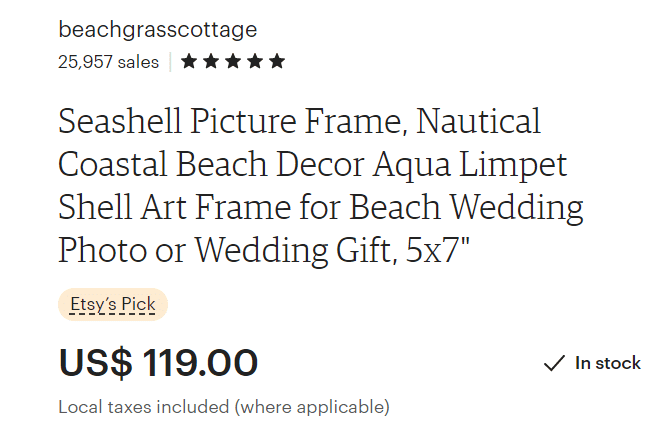
2nd – Amazing product descriptions
Descriptions allow you to interact with the user and convince them to buy indirectly. Use your brand voice to draft unique descriptions that address the user’s pain points and highlights why they should buy your product. At the same, include keywords for search benefits. proofread all your titles to avoid any spelling errors as well.
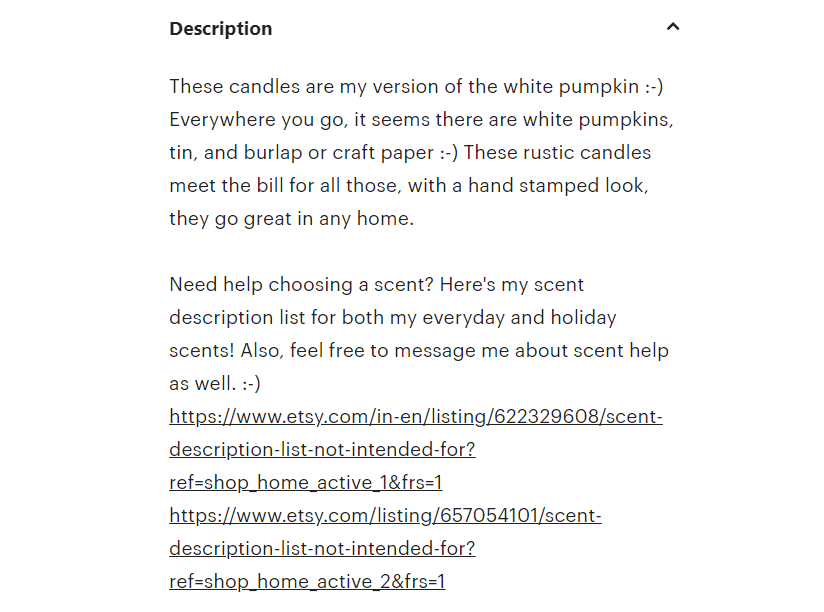
3rd – Clean and professional photos
Adding good pictures is the best way to stop a user from scrolling past your listing. Invest in some professional photography or learn how to do it yourself. Add photos from multiple angles and put your product in the best light to make them attractive.
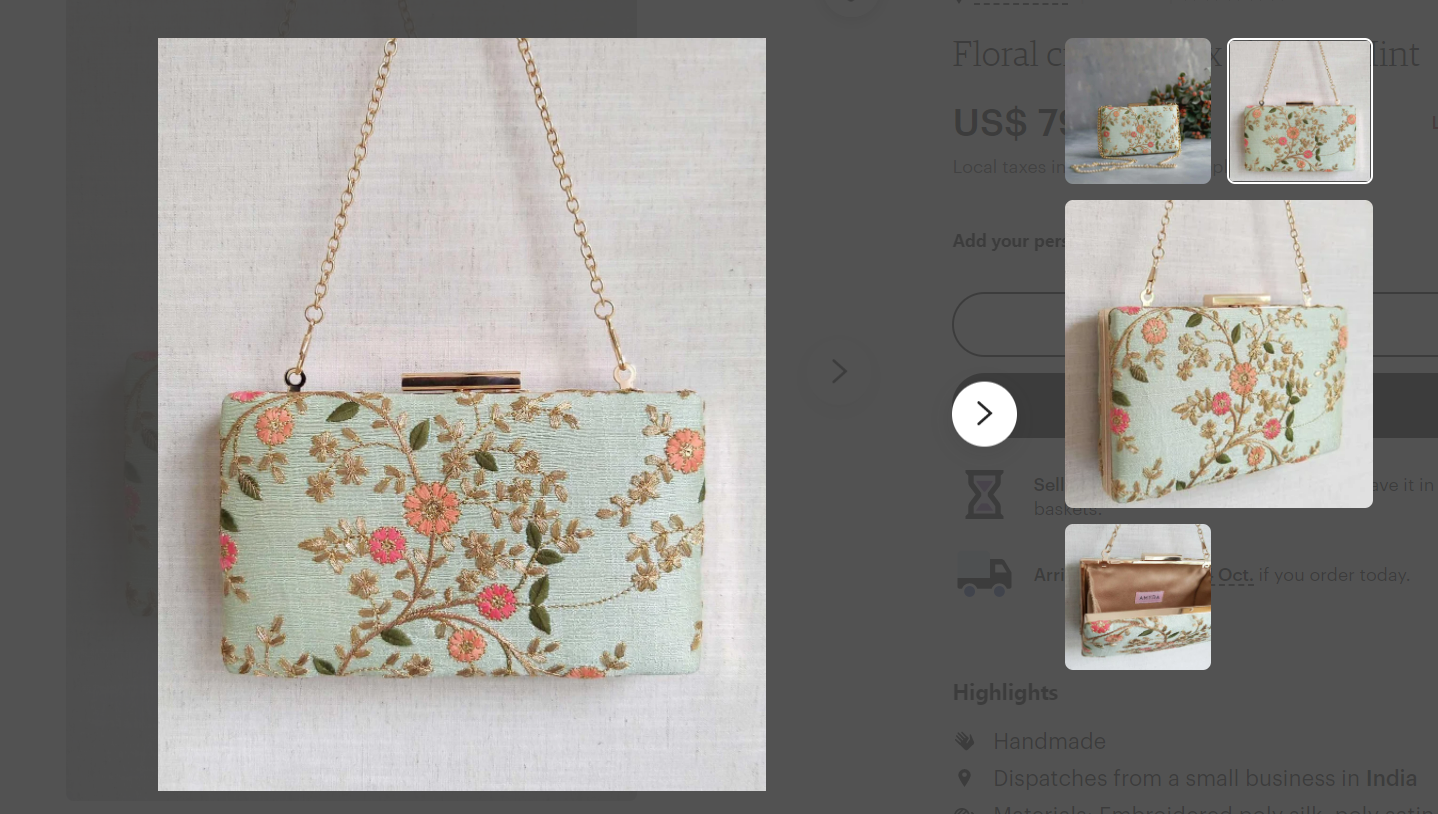
4th – Tags and attributes
Attributes are unique elements that show your listing in the search results. Tags work as invisible keywords that aid visibility. It’s important to use both these features effectively to make your listings more popular and discoverable.

5. Sort out shipping and inventory management
Managing your inventory is important for shipping all orders timely and earning good reviews. Timely shipments and 5-star ratings will ultimately bring your return customers, help in word-of-mouth marketing, and build your store’s goodwill.
However, inventory management is not everyone’s cup of tea. Small businesses particularly struggle with maintaining a smooth inventory because of a crunch in resources, fluctuating demand, and short lifecycle for the product.
An Etsy survey showed how a seller spends equal time creating their product and performing inventory management tasks.
However, as challenging as it may seem, you can perfect your shop’s inventory through these best practices.
-
-
- Make an inventory management plan from the start, even if you don’t have any orders.
-
- Create a workspace to store all the raw materials, extra stock, and packed orders.
-
- Analyze customer demand and forecast your sales to maintain stocks.
-
An inventory and listing management tool like SellerChamp can resolve all your inventory-related worries. Keep track of all your orders and stock and eliminate overselling altogether with this intuitive tool. Sync your inventory across other platforms you use and stay a step ahead of all the orders you receive.
6. Optimize your shop to rank higher
When your shop is ready to launch, work on SEO to gain better visibility and drive more traffic to your store. Optimize your shop for both Etsy and Google because most principles of SEO will apply to optimizing your shop for Etsy search as well.
Here are some handy SEO tips for your shop.
-
-
- Identify your keywords and use them in product titles and descriptions, like this poster listing.
-
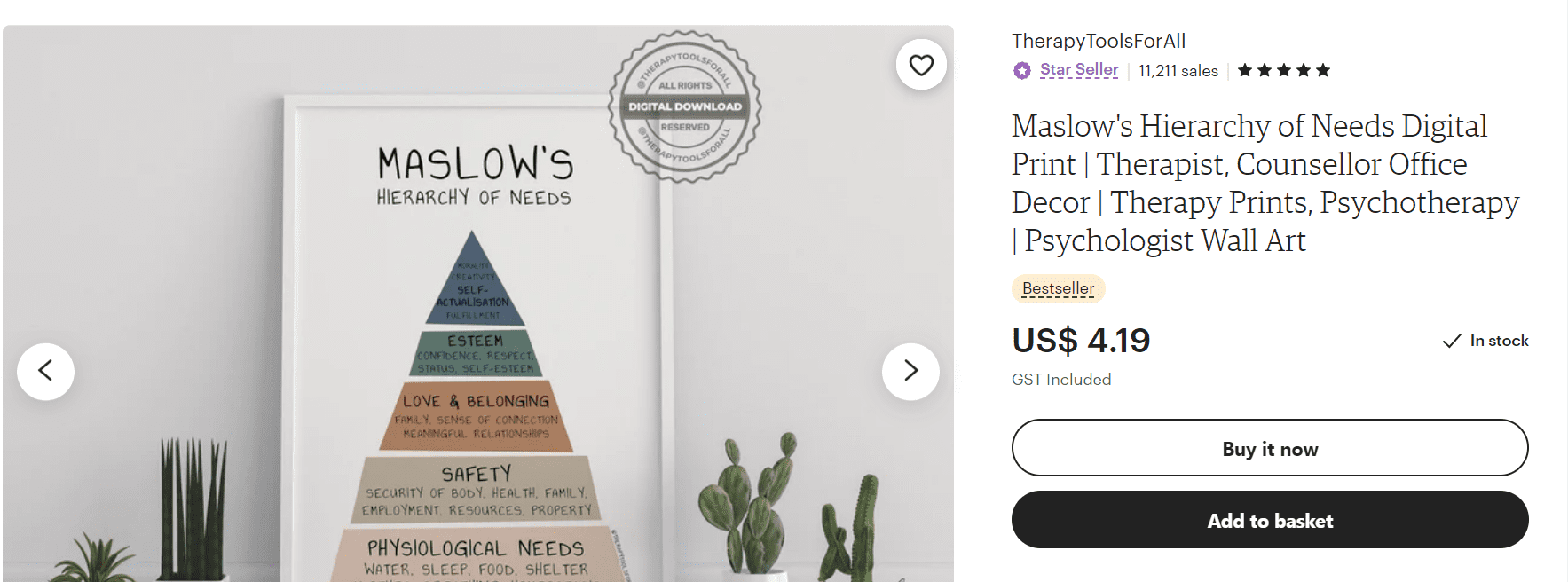
-
-
- Include multiple tags relevant to your product and use the maximum limit of 13.
-
- Keep renewing your listings once every four months because the Etsy algorithm rewards recency.
-
- Secure inbound links for your shop through promotions.
-
-
7. Select your payment and billing information
The last thing to complete your Etsy store setup is the payment information.
Etsy Payments is the primary option for receiving your income as a seller. This feature allows buyers to complete their purchases through a range of payment methods conveniently. Once the payment is processed, you receive it directly from your bank.
However, if you’re selling from a country not eligible for Etsy Payments, you can link your PayPal account to get all the payments.
How to Start Selling on Etsy: Wrapping Up
With over 60 million products listed on the platform, Etsy is one of the most promising online marketplaces for small business owners and artists. The platform offers access to millions of buyers to artists looking to monetize their skills and sell their artwork. They can turn their side hustle into a full-blown business with a well-curated Etsy store.
Use the steps detailed in this blog to learn the fundamentals of Etsy and launch your shop.
Boost your success on Etsy with a tool like SellerChamp. This listing management software allows you to automate various processes—like publishing and maintaining listings. You can also track your inventory, price your products competitively, and gain crucial insights to strategize your growth.


